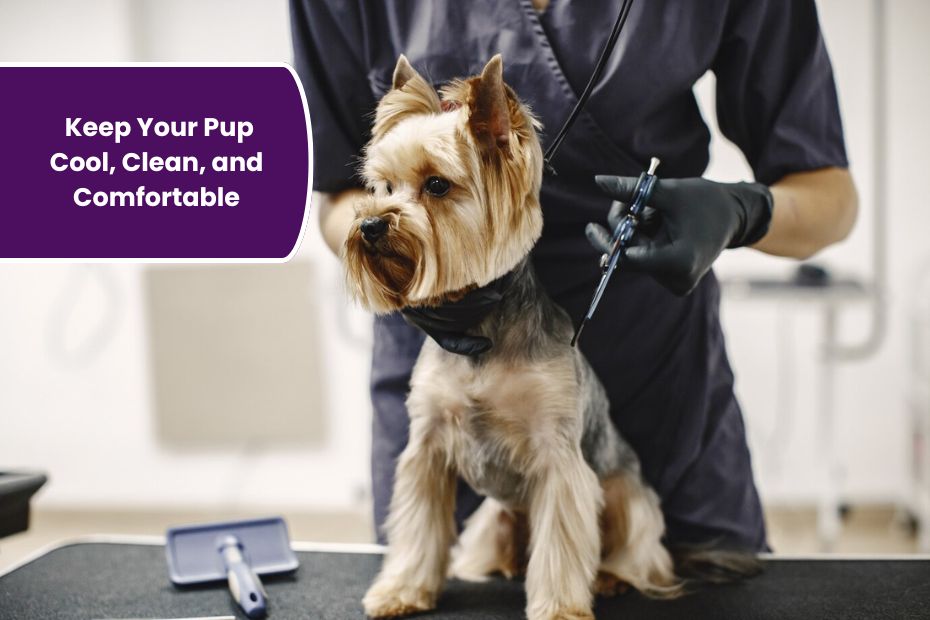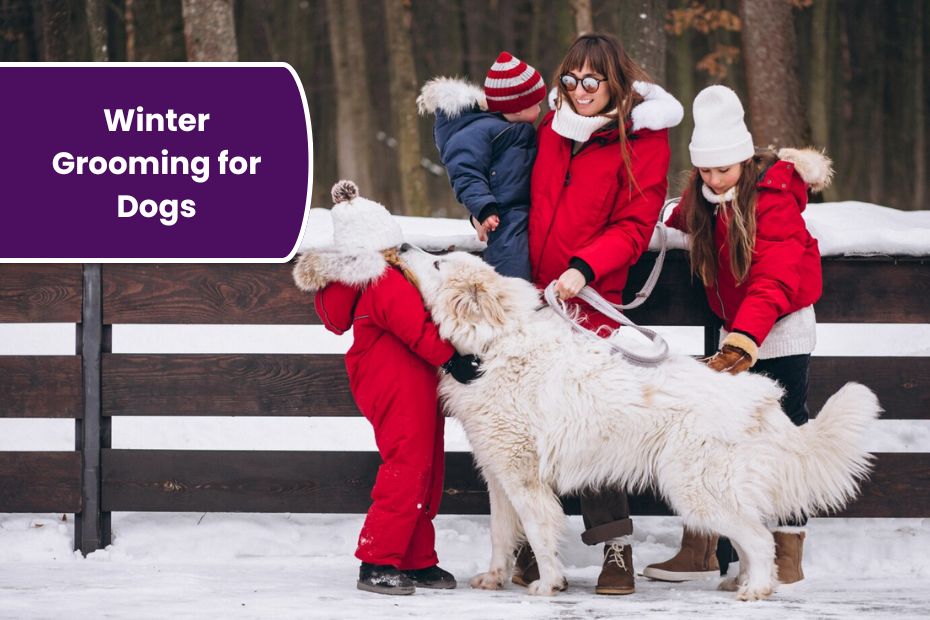Grooming little dogs is a necessary component of their general health and well-being, not only a cosmetic chore. Small breeds can have sensitive skin, unusual coat types, and particular maintenance requirements different from those of their larger cousins. Learning how to groom your little dog at home will improve your bond, save you money, and enable early identification of health problems regardless of your level of expertise with dogs or new pet ownership.
From tools and methods to managing behavioral problems, this book addresses all you need to confidently groom tiny dogs. Many small dog owners deal with typical issues including matted fur, nail clipping anxiety, and ear infections; yet, with the correct information and planning, these problems can be controlled or avoided totally. Following these professional advice and using the suggested grooming items can help your pet to be comfortable all year long and look fantastic.
Essential Grooming Tools for Small Dogs
Effective and safe grooming of tiny dogs depends on having the correct tools. Smaller breeds may call for softer grooming techniques that complement their delicate features. Start with a premium slicker brush meant especially for little dogs; it helps untangle and loosen fur without aggravating the skin. Particularly for flea identification or knot untangling around delicate places like the ears or behind the legs, a fine-tooth comb is extremely handy.
Small dogs really need nail clippers since consistent nail cutting helps to avoid joint tension and posture problems. Look for clippers with safety guards to prevent too deep cutting. Maintaining a good coat and skin pH calls for dog-safe shampoo and conditioner. Maintaining dental hygiene and avoiding infections depend equally on ear cleaning treatments and soft bristle dog toothbrushes. For best grooming results, each of these instruments should be customized to the size and kind of coat of your dog.
Brushing Techniques for Tangle-Free Coats
Maintaining a little dog’s coat tangle-free, clean, and smooth requires consistent brushing. Unique coat characteristics of different breeds call for particular brushing techniques. For instance, daily brushing of long-haired breeds like Shih Tzus or Yorkies helps to prevent mats and tangles. To gently work through knots without dragging on the skin, use a slicker brush in tandem with a detangling spray. Starting from the rear, work forward with gentle, short strokes.
To reduce irritation, always brush toward hair growth. A soft-bristle brush used once or twice a week helps short-haired breeds like Chihuahuas or Pugs shed loose hairs and maintain a lustrous coat. Always pay close attention to places where mats usually form—behind the ears, under the arms, and around the tail. Frequent brushing not only makes one look better but also increases circulation and lowers shedding around the house.
Bathing Your Small Dog the Right Way
Proper bathing of little dogs preserves their coat and skin condition and enables them to smell fresh. Although lifestyle and coat type will affect this, most small breeds should be washed every three to four weeks. Always use a dog-specific shampoo free of strong chemicals; use tepid water temperature to avoid shock or pain. From the neck down, fully wet your dog to avoid water in the eyes and ears. Working up a thorough lather, lightly shampoo and massage into the coat.
Rinse completely to guarantee no residue remains since residual soap might irritate skin. If needed, gently towel-dry your dog then follow up with a low-heat blow dryer on the cold setting. Till completely dry, keep the dog warm. Bath time presents another excellent chance to look for lumps, pimples, or parasites. Creating the bath a peaceful experience helps lower tension for next grooming visits.
Nail Clipping Without the Struggle
Though it can be scary, cutting a little dog’s nails is necessary to avoid pain and damage. Long nails can cause bad posture and even joint problems. Use a tiny dog-specific nail clipper, ideally one with a built-in safety protection. Get your dog accustomed to having their paws handled gently during playtime before cutting. Choose a well-lit spot and mark the quick—that is, the pink portion inside the nail—avoid cutting into this area, as it can bleed and cause discomfort.
Should your dog have dark nails, cut in little increments to remain safe. Should an unintentional cut result in bleeding, halt it with styptic powder. Many little dogs get nervous during nail cuts, hence take breaks, give rewards, and gently talk to them. Over time, nail trimming gets easier with regular practice and positive feedback. Remember also to examine and cut the dewclaws; if ignored, they may develop into the paw pad.
Cleaning Ears and Eyes Gently
Though they are often neglected in tiny dog grooming regimens, ear and eye care is absolutely vital to prevent infections and discomfort. Limited ventilation makes small breeds with floppy ears—such as Cocker Spaniels or Havanese—particularly prone to ear infections. To carefully clean the outside ear, use a vet-recommended ear cleaning solution and cotton balls—never cotton swabs. Steer clear of deep ear canal insertion of anything.
See a veterinarian right once if you detect a bad odor or discharge. Just as crucial is eye care, particularly for breeds like Pekingese or Maltese that are prone to tear staining. To clear crust or discharge, use a wet cloth or dog-safe eye wipes. For every eye, always start from the inner to outer corner using a separate cloth. Maintaining a clean face not only increases hygiene but also helps to avoid long-term discoloration and discomfort. For better, happier pets, include these procedures into your normal grooming routine.
Haircuts and Coat Trimming Tips
Though it seems difficult, giving a tiny dog a haircut at home becomes doable with time and the appropriate materials. To save little dogs from being startled, use a low-vibration, quiet clipper meant for them. Sort blade guards based on intended coat length. Before trimming, always start by brushing the coat to get knots free. Starting from the rear, work forward with calm, assured strokes. Pay particular attention to delicate parts including the face, paws, and sanitary areas; use rounded tip scissors to avoid damage here.
With rewards and praise, keep your dog calm and steady all through the process. Some coats, like those of Poodles or Bichon Frises, call for frequent cuts to avoid matting. First-timers might want to check with a professional groomer or view instructional videos. A regular haircut will eventually help your tiny dog remain cool, neat, and comfortable in all seasons.
Dealing With Common Grooming Challenges
Small dog grooming is not always easy; owners frequently deal with problems including nervousness, matting, or skin sensitivity. Many dogs have noise sensitivity or prior trauma that makes them afraid of grooming instruments. Gradually introduce every tool so that your dog may sniff and investigate each before usage. Create a good association by using desensitizing strategies coupled with rewards. Another frequent issue, particularly in curly or long-haired dogs, is matting. Work slowly with a dematting comb instead of cutting mats with scissors.
Shampoos or brushes can also cause skin irritation; always test new items on a tiny patch of skin before mass use. If in doubt, choose hypoallergenic products since inappropriate grooming products might aggravate allergies. If your dog objects to grooming all around, think about behavioral treatment or professional instruction. Early resolution of these issues strengthens a good and trusting relationship and helps both dog and owner experience more comfortable grooming.
Table: Small Dog Grooming Essentials by Coat Type
| Coat Type | Recommended Brush | Frequency of Grooming | Notes |
|---|---|---|---|
| Short-Haired | Soft-bristle brush | Weekly | Low maintenance, easy to manage |
| Long-Haired | Slicker brush + comb | Daily | Prone to tangling, needs trims |
| Curly/Wiry | Dematting comb + clippers | Every 2–3 days | Requires regular cutting |
| Double-Coated | Undercoat rake | 2–3 times/week | Heavy shedders, seasonal blowout |
| Hairless | Cloth wipe + sunscreen | As needed | Moisturize and protect skin |
When to Seek Professional Help
Although many grooming chores can be accomplished at home, some circumstances call for a professional groomer. Professional grooming may be the best and safest option if your dog needs a breed-specific haircut, is very afraid or highly matted. Trained to manage challenging behaviors, groomers also use specialized gear not always accessible to the typical pet owner. They can also identify early indicators of health issues such skin disorders, parasites, or ear infections.
Professional care also helps dogs with physical restrictions or medical issues. Regular professional grooming visits—about every six to eight weeks—ensures that your little dog gets complete attention free from risk of injury or stress. Regular home grooming is not enough to keep coat condition and hygiene; occasionally expert visits can help. To guarantee your pet is in good hands, always select a licensed groomer with background in small breeds and good ratings.
FAQs
1. How often should I groom my small dog?
Most small dogs benefit from grooming every 1–2 weeks depending on their coat type, activity level, and skin condition. Long-haired and curly-coated breeds require more frequent care.
2. Can I use human shampoo on my small dog?
No, human shampoo can disrupt a dog’s skin pH and cause irritation. Always use a shampoo formulated specifically for dogs.
3. How do I calm my dog during grooming?
Create a routine, use calming aids like pheromone sprays, and reward your dog with treats and praise. Start with short sessions and gradually build tolerance.
4. What if I accidentally cut the quick while trimming nails?
Apply styptic powder or cornstarch to stop the bleeding. Reassure your dog and take a break before continuing to reduce stress.
5. Is professional grooming necessary if I groom at home?
While home grooming is beneficial, occasional visits to a professional ensure deeper cleaning, specialized cuts, and health checks you might miss.
| Home Page | Click Here |
| Dog Grooming | Click Here |


